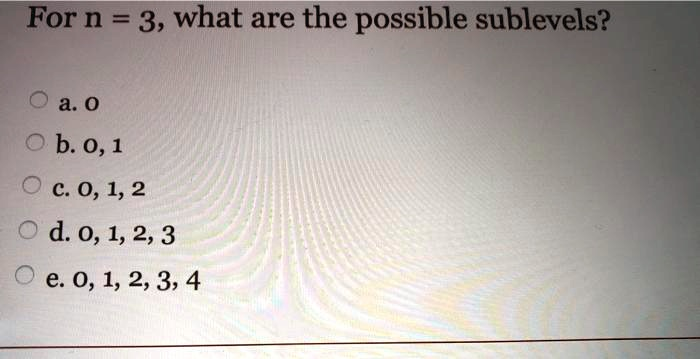For n 3, what are the possible sublevels? O a. 0 0 b. 0, 1 0 c 0,1,2 d.0,1,2,3 e: 0, 1,2,3,4

The Correct Answer and Explanation is:
The correct answer is c. 0, 1, 2.
In atomic theory, the principal quantum number nn defines the energy level of an electron in an atom and influences the size and energy of the orbital. For each value of nn, there exists a range of values for the azimuthal (or angular momentum) quantum number ℓ\ell, which determines the shape of the orbital and the sublevel the electron occupies.
The values of ℓ\ell depend directly on the value of nn. Specifically, ℓ\ell can be any whole number from 0 up to n−1n – 1. For example:
- If n=1n = 1, then ℓ=0\ell = 0
- If n=2n = 2, then ℓ=0,1\ell = 0, 1
- If n=3n = 3, then ℓ=0,1,2\ell = 0, 1, 2
So, for n=3n = 3, the allowed sublevels are:
- ℓ=0\ell = 0: the s sublevel
- ℓ=1\ell = 1: the p sublevel
- ℓ=2\ell = 2: the d sublevel
Each of these sublevels is associated with a distinct shape and set of orbitals. The s sublevel is spherical, the p sublevel is dumbbell-shaped, and the d sublevel has more complex cloverleaf or donut-shaped orbitals. These different sublevels accommodate electrons in specific ways that influence the chemical behavior and bonding patterns of elements.
Understanding how nn and ℓ\ell relate is critical for writing electron configurations and predicting reactivity in chemistry. This structure also underpins much of the periodic table’s layout, as similar configurations group elements into families with shared properties.
